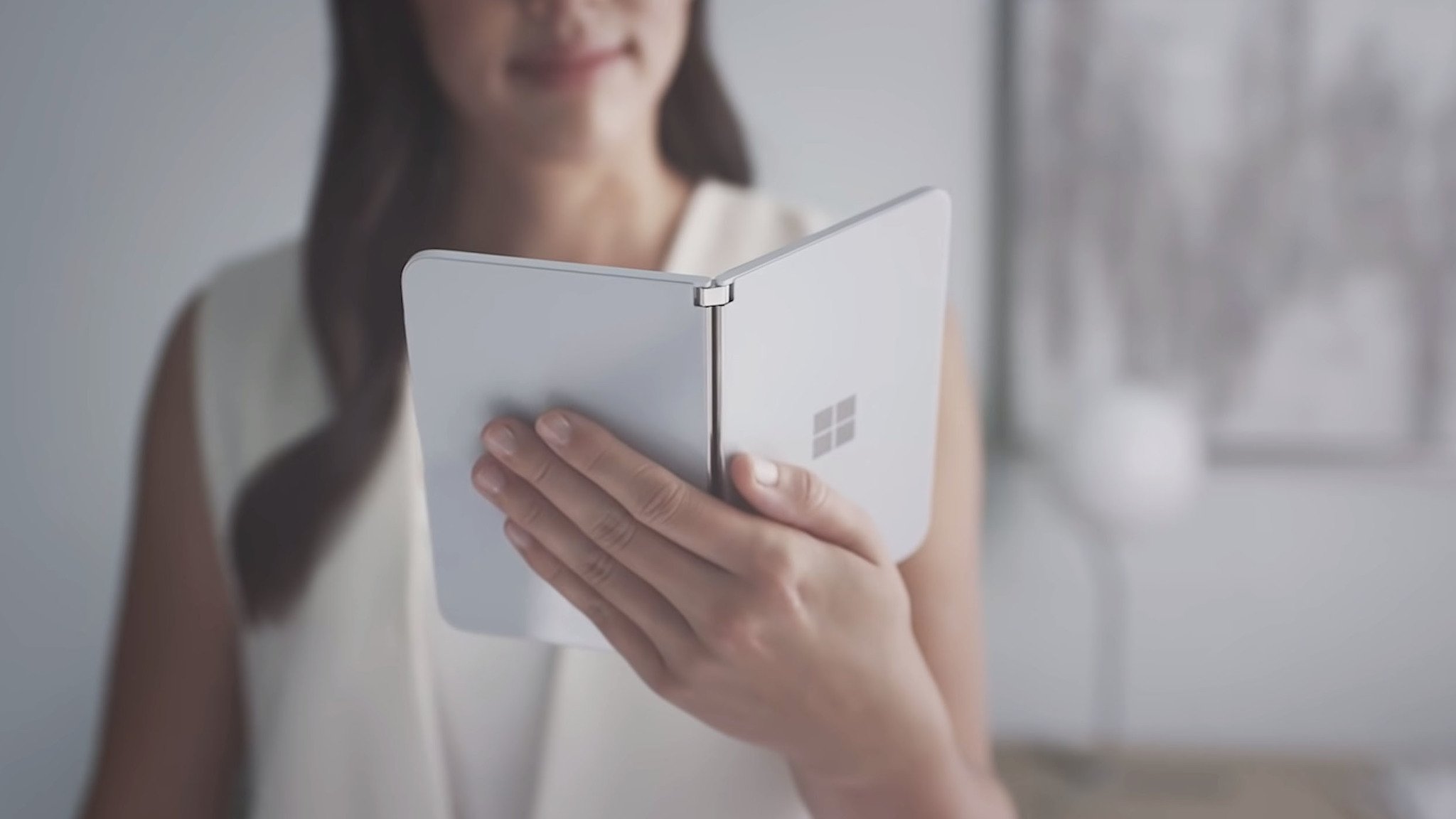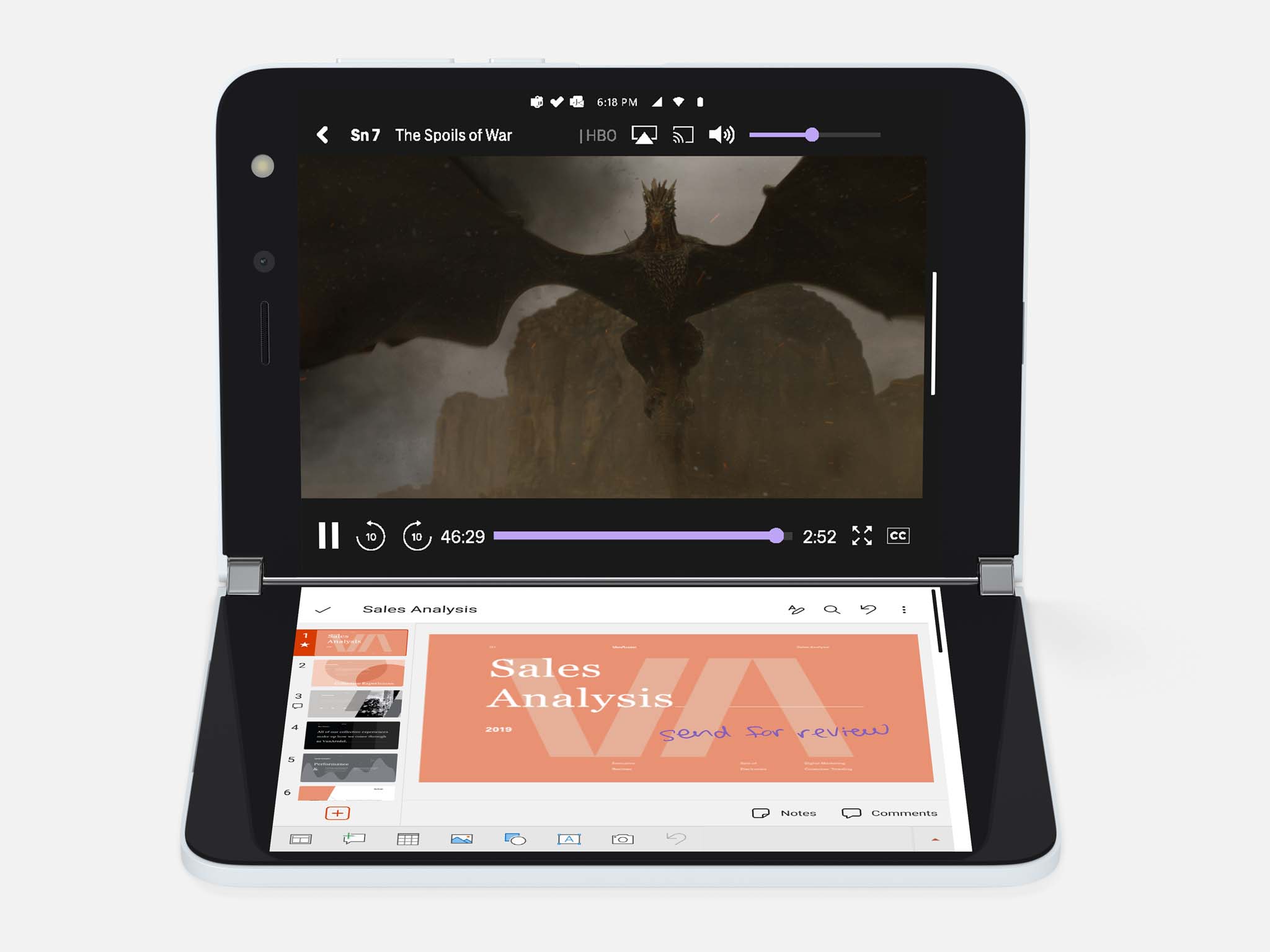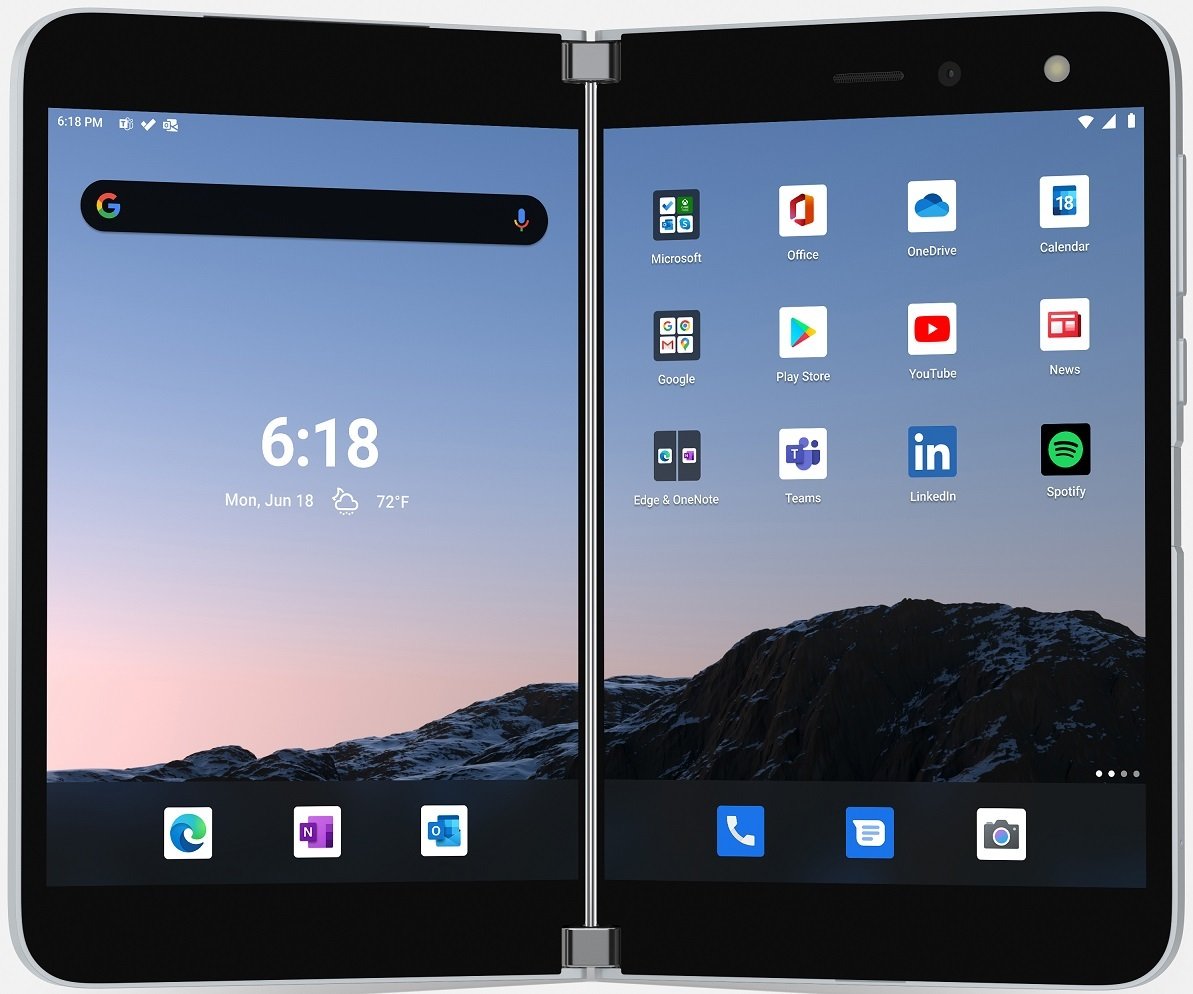Who is Surface Duo for? Don't overthink it.
For now, Surface Duo is for fans of Microsoft and Surface hardware. But it's really about changing the conversation.

This week has been rather momentous as Microsoft pulled the curtain back on its dual-screen mobile device dubbed Surface Duo. Pricing and availability were revealed, and as expected, both did not quite meet the hopes of many techies.
One question that comes up frequently is who is Surface Duo for – as in, who is expected to buy this thing?
I see a lot of handwaving about how Surface Duo won't sell to the masses, it's not a consumer device, it's too expensive, grandma won't buy it, Billy down the street has no need for it, and how LG is a better option (even though no one buys LG phones). But all of this misses the point.
The answer to who should buy Surface Duo is simple, and I think a lot of our core audience is overanalyzing it. Surface Duo is for Surface enthusiasts and those that rely on Microsoft's services. It is also for people who want a different Android experience that is more focused on productivity and creativity. That is a niche group, but niche isn't a bad thing when it comes to new technology.
This hypothesis is not me riffing or taking a guess. Microsoft's chief product officer Panos Panay has said this multiple times.
In an in-depth interview with Fast Company, Panay says matter of factly that Surface Duo is for "Surface fans who live in the Microsoft app ecosystem." Panay reiterates the position again in the Surface Duo press presentation (embedded above), which I implore you to watch. Towards the beginning, Panay states that Duo is about "challenging conventional thinking … that leads to building new categories," and after the Surface Duo sizzler reel, he remarks, "We built this product for Surface fans, there's no question about it, for people who love Microsoft …." Later Panay gives a meta-analysis that Duo is "the Microsoft you love and the Android you know."
Surface Duo is about "challenging conventional thinking … that leads to building new categories."
And that's it. Microsoft is not playing 4D chess.
Get the Windows Central Newsletter
All the latest news, reviews, and guides for Windows and Xbox diehards.
Surface Duo is not here to defeat Samsung or Apple. Surface Duo means to start a new conversation, and it's doing that. Surface Duo is about what mobile computing could be and how it can be better. Surface Duo has a lot of interest and curiosity, even from those with no plans to buy one, which is the whole point of it.
Will that lack of mass purchasing always be the case? Of course not. I've stated in our podcast that Surface Duo is about testing the theory of dual-screen devices. It's a stripped-down, core experience that will go into real people's hands to see what they do with it. Future iterations of Surface Duo will add those features that are glaringly absent in this iteration. Microsoft is also hoping Surface Duo drives other device makers to embrace the concept, too — it's not just for them.

The trajectory and eventual goal for the Surface Duo should be evident. The first version gets people talking with early adopters, Surface fans, and general tech enthusiasts taking the plunge and buying one. Most people will simply look on with curiosity. Surface Duo v2 will fix shortcomings of the first model, and more people will consider buying one that time around. By the third version, Microsoft, in principle, will have made the dual-screen mobile device that meets the needs of its target demographic.
Surface Duo is meant for a specific demographic. It's for Surface and Microsoft enthusiasts, early adopters.
Of course, none of this matters if the core experience of Surface Duo — that two screens are better for productivity and creativity — falls flat. That could happen. This possibility is why its price, camera quality, lack of Qi, or NFC does not mater. No one can justify a $1,400 category-defining device if it fails at its core experience even if it has a whizbang camera or lets you buy a Slim Jim at 7-11 without your wallet. But if the dual-display approach works, adding Qi, NFC, and improving the camera experience later is solvable. Getting the foundation right in a new device experience is the hard part.
As far as price and it sinking sales? There are three things to consider:
- Discounts. Microsoft routinely puts new hardware on sale near the holiday season. This strategy happened last year with Surface Pro X, Surface Pro 7, and Surface Laptop 3. I suspect we will see Surface Duo drop in price later this year. Companies often build in a higher price point so they can do this to drive sales. There's also the whole trade-in thing.
- Expectations. If Microsoft expects to sell 200,000 Surface Duos and makes that many, but it only sells 80,000 – that's a big failure. If, however, Microsoft plans to sell 10,000 and sells 9,100, then it is a success. Microsoft learned a hard lesson about "big launches" with Surface Pro 1 and 2, where it had to write down $900 million due to overstock. This is why there is no global release. If you strictly control inventory and have it mirror demand, your product is not a failure because you matched expectations. That's a very different definition from the success of a "mass consumer product," but it is also not wrong.
- Proprietary everything is expensive. Surface Duo has the world's thinnest touch display that supports inking in a mobile device. The battery, the motherboard, the inking processor, the dual sensors, the antenna design, are all custom made and not mass-produced. That drives up costs. Anyone who studies the Bill of Materials (BOM) for a smartphone knows the display is the most expensive part. That's true here too, especially when you have two, and they have touch, pen support, and a wide color gamut.
Yes, I know those are not the answers you want to hear, but that is the reality of innovation. New tech is always more than what we want to pay for it. It is why I sat out for Tesla's electric car revolution until (1) it came down in price, and (2) the infrastructure was there to support it. Both of those things happened in 2019 but were not true in 2012.
Surface Duo is meant to start a new conversation.
Right now, Surface Duo is intended for a specific, narrow demographic. It's for Surface and Microsoft enthusiasts, early adopters, and those who want to try something new. It's not complicated. As this platform grows, so will the audience, with many going from onlookers to participants.
The bottom line is Surface Duo is driving the conversation in a very mature and stagnant smartphone market. There is a reason why those who refuse to buy one are commenting on nearly all our articles. There is also an explanation of why the tech press has been quite positive on Surface Duo. The core concept makes sense. Your piqued curiosity is why Surface Duo exists.
Microsoft doesn't need to justify the existence of the Surface Duo
But if you don't think it's worth it now, that's fine too. Sit back and enjoy the ride because it is happening.

Two screens are better than one.
Microsoft delves into the future of foldables with an ambitious dual-screen device, featuring two ultra-thin 5.6-inch AMOLED displays bound by a 360-degree hinge. This pocketable inking-enabled Android smartphone marks the latest in the Surface lineup, geared for mobile productivity.
Microsoft Surface Duo
Main

Daniel Rubino is the Editor-in-chief of Windows Central. He is also the head reviewer, podcast co-host, and analyst. He has been covering Microsoft since 2007 when this site was called WMExperts (and later Windows Phone Central). His interests include Windows, laptops, next-gen computing, and wearable tech. He has reviewed laptops for over 10 years and is particularly fond of 2-in-1 convertibles, Arm64 processors, new form factors, and thin-and-light PCs. Before all this tech stuff, he worked on a Ph.D. in linguistics, performed polysomnographs in NYC, and was a motion-picture operator for 17 years.
